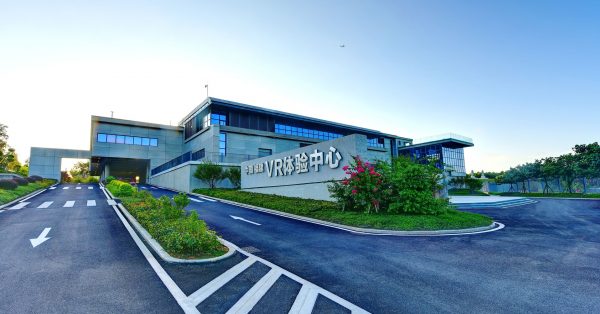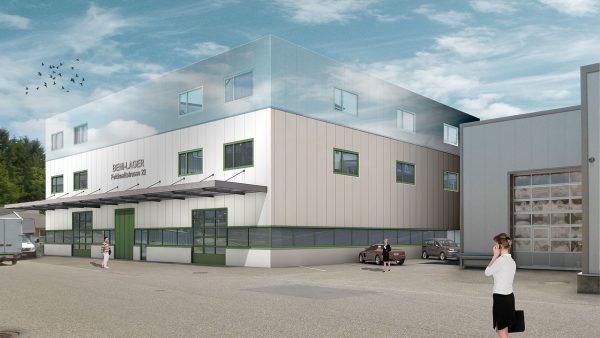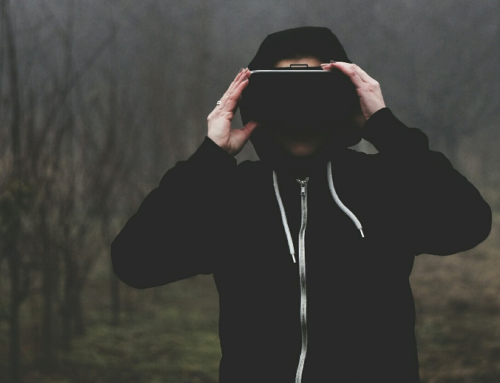Wie Sie einen ersten Einblick in Alibaba`s Buy+ VR Store bekommen.
Wenn jemand daran zweifelt, dass Virtual Reality (VR) und Augmented Reality (AR) die nächsten dominierenden Trends in der Technologie sind, dann verbringt er wahrscheinlich zu viel Zeit „in Real-Life“ und nicht online.

Denn nur diejenigen, die wirklich unplugged sind, könnten den globalen Wahnsinn verpasst haben, der durch Pokemon Go entstanden ist. In nur ein paar Wochen ist das AR-Spiel, in dem Spieler virtuelle Kreaturen aus dem beliebten japanischen Franchise in realen Umgebungen jagen, zum beliebtesten Mobilegame aller Zeiten geworden.
Laut Goldman Sachs wird der globale VR- und AR-Markt bis 2020 ein Volumen von 110 Milliarden Dollar erreichen. Während einen Großteil der Aufmerksamkeit, die Spieleindustrie bisher auf sich gezogen hat, gibt es auch Unternehmen aus anderen Branchen, die die Technologien im Auge haben. Die Alibaba-Gruppe sieht vor allem für den eCommerce großes Potenzial und hat im vergangenen Jahr damit begonnen, sich in einem Markt zu positionieren, der in China in 4 Jahren voraussichtlich 8,5 Milliarden Dollar erreichen wird. Am Freitag machte das Unternehmen einen weiteren Schritt, als sein virtueller Store „Buy+“ auf dem Taobao Maker Festival in Shanghai Premiere feierte.
„Während die Nutzer sich weiterhin auf sinnvollere Weise mit der Plattform beschäftigen, fördern wir die Konsumfunktionen der nächsten Generation, wie z.B. VR, um die allgemeine User Experience zu transzedieren“, sagte Chris Tung, Chief Marketing Officer von Alibaba, in einer Erklärung.
Buy+ ermöglicht es Verbrauchern, in einer virtuellen Umgebung mit 360-Grad-Ansichten über ein VR-Headset und zwei Handregler einzukaufen. Sie können Produkte von Taschen über Schuhe bis hin zu Dessous durchstöbern und sogar die Kleidung und Accessoires auf einem Laufsteg virtuell präsentieren. Die Kunden können dann durch verschiedene Funktionen blättern, die detailliertere Produktinformationen und die Möglichkeit bietet, einen Artikel in den Warenkorb zu legen oder ihn zu kaufen. Buy+ ist jedoch noch in der Beta-Phase und Alibaba hat keinen Termin für die Veröffentlichung bekannt gegeben.
Während die Prognosen für VR in China hoch sind, befindet sich die Branche dort noch im Anfangsstadium. Nach Angaben des in Peking ansässigen Forschungsunternehmens Analysys International Enfodesk lag der Gesamtmarkt inklusive AR im vergangenen Jahr bei nur 28,9 Millionen Dollar, obwohl er sich seit 2014 vervierfacht hat. Der Markt soll laut Prognosen um 372 Prozent bis $136.5 dieses Jahr steigen und liegt damit noch weit unterhalb der Milliarden Dollar, die für das Jahr 2014 erwarten werden. Aber das hat Alibaba nicht davon abgehalten, seine VR-Strategie weiter voranzutreiben.
Anfang des Jahres führte Alibaba eine Investitionsrunde in das US-Mixed-Reality-Unternehmen Magic Leap an. Die Mixed Reality weit nur marginale Unterschiede zur AR auf. Wo VR eine vollständig digitale Umgebung ist, überlagert AR digitale Inhalte in der realen Welt. Die Mixed Reality erlaubt es jedoch, dass digitale Inhalte mit der realen Welt interagieren. Zum Beispiel kann eine Sonne, die für eine Umgebung mit Mixed Reality geschaffen wurde, Licht werfen und Schatten von verschiedenen realen Objekten in dieser Umgebung erzeugen.

Während einer Keynote-Präsentation auf dem Taobao Maker Festival zeigt Magic Leap CMO Brian Wallace eine Mixed-Reality-Umgebung mit einer werdenden Mutter, die Lampen für ein Badezimmer sucht. Die Mutter stellte verschiedene Kinder-Themenleuchten auf ein Büro, um zu sehen, wie sie aussahen, bevor sie eines auswählte und es über die MR-Software kaufte. Das Detail, mit dem die digitalen Objekte in der Umgebung gerendert werden, wird laut Wallace ein besseres Einkaufserlebnis für die Konsumenten auf den Handelsplattformen von Alibaba bieten.
„Es ist so real wie ein physisches Objekt“, so Wallace.
Marken, die über Alibaba Produkte vertreiben, haben bereits damit begonnen, VR zur Verbesserung der User Experience zielorientiert einzusetzen. Im Mai startete der US-Konsumgüterriese Procter & Gamble eine VR-Kampagne rund um den Feiertag 5/20. Das Datum auf chinesisch klingt wie „I love you“, was P&G dazu veranlasste, eine virtuelle Umgebung zu schaffen, in der Konsumenten mit einem virtuellen Freund oder Freundin interagieren können. Die chinesischen Schauspieler Yang Yang und Dilireba spielten die Rollen, indem sie den Verbrauchern Frühstück im Bett servierten und Produkte wie Rejoice Shampoo, Crest Zahnpasta und Pampers Windeln schenkten. Der Schweizer Lebensmittelkonzern Nestle führte eine ähnliche VR-Marketingaktion durch, bei der die Konsumenten in einem Kleintransporter durch den so genannten „Planets of Wonders“ führen, wo sie auch mit den Produkten des Unternehmens interagieren konnten.
Um das virtuelle Einkaufen an seinen Standorten weiter zu erleichtern, hat Alibaba im März eine eigene VR-Forschungseinrichtung am Hauptsitz in Hangzhou, China, in Betrieb genommen. In einem Brief an die Medien während des Taobao Maker Festivals sagte Alibaba, dass das GnomeMagic Lab sowohl VR- als auch AR-Funktionen entwickeln wird, um seine bestehenden Online-Einzelhandelsunternehmen zu ergänzen. Das VR-Team hat bereits Hunderte von Modellen für verschiedene Produkte, die auf seinen Plattformen verkauft werden, fertiggestellt. Zudem plant Alibaba, standardisierte Tools zu entwickeln, damit Marken und Händler ihre eigenen 3D-Inventare erstellen können.
„Das langfristige Ziel ist es, Unternehmen zu ermöglichen, VR-Stores so schnell und einfach wie eine Website einzurichten“, sagte Alibaba.


